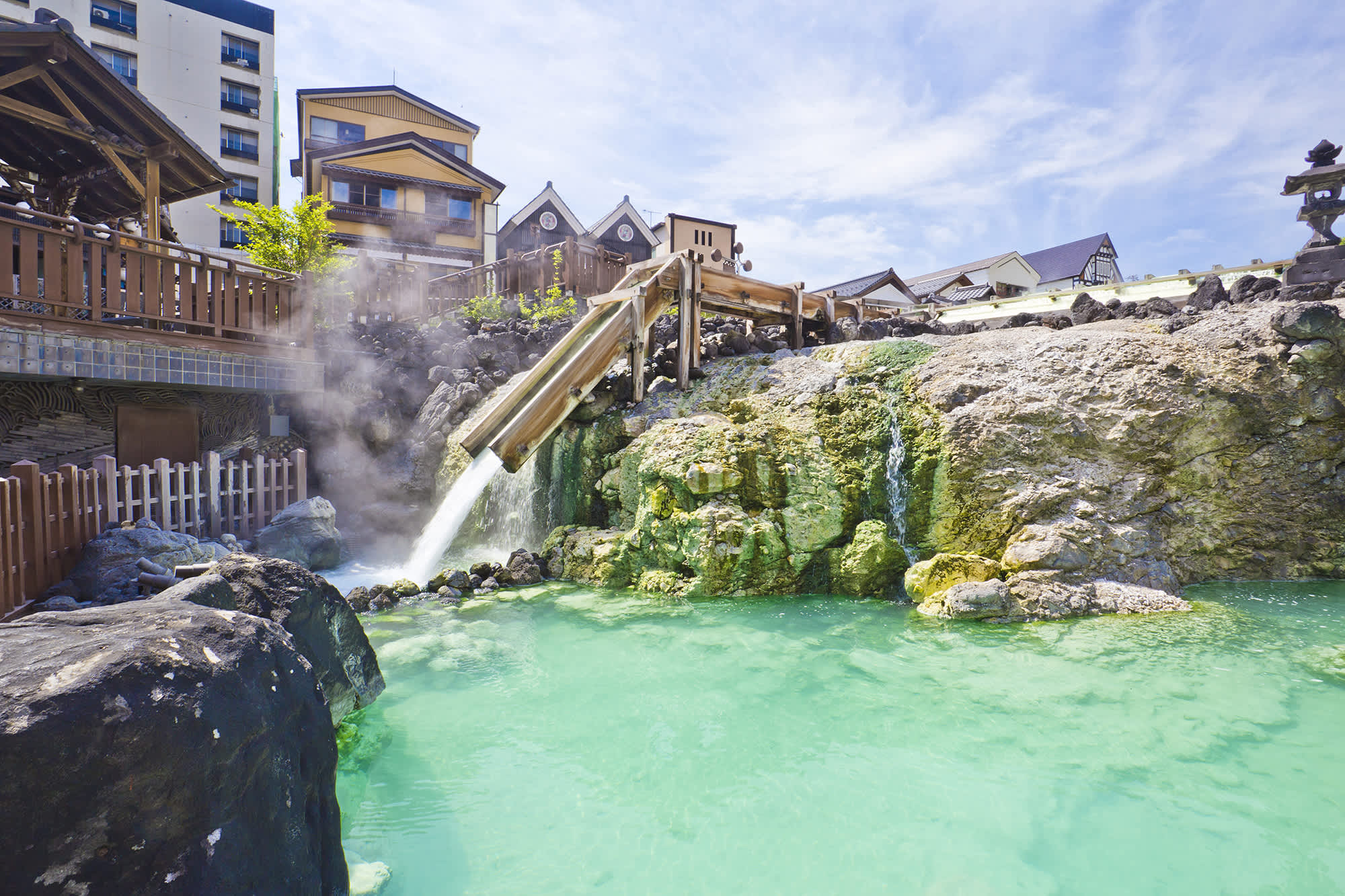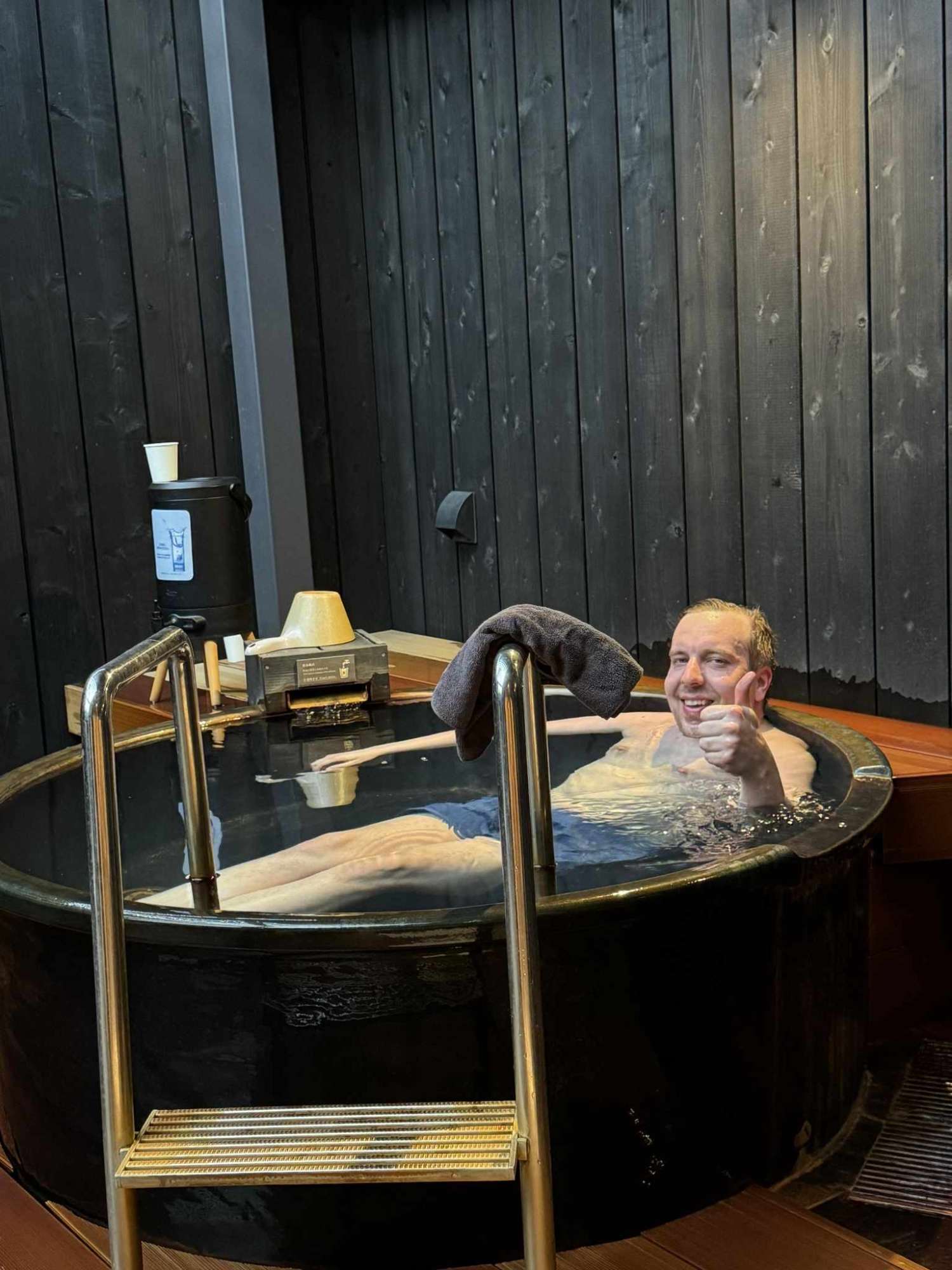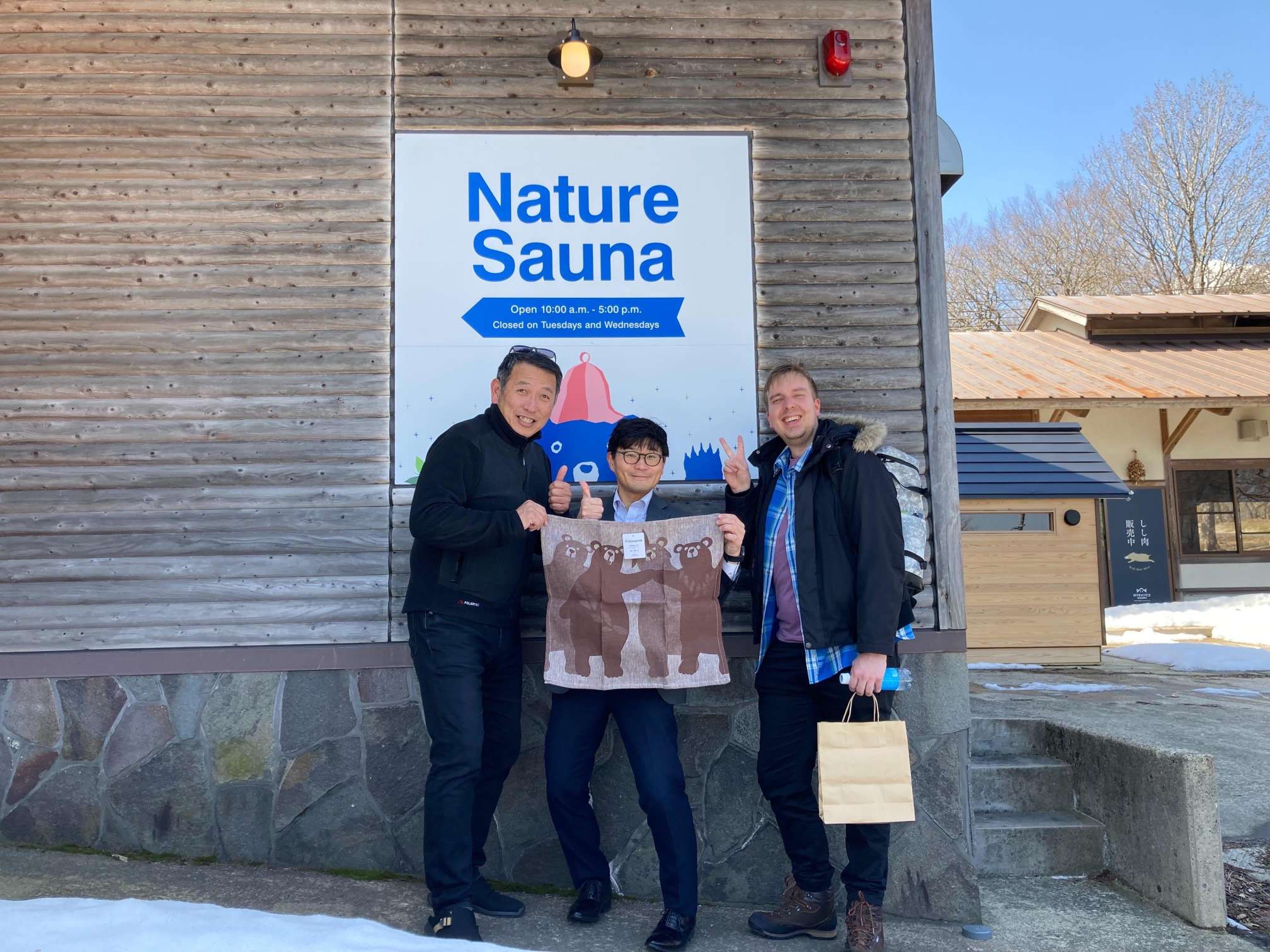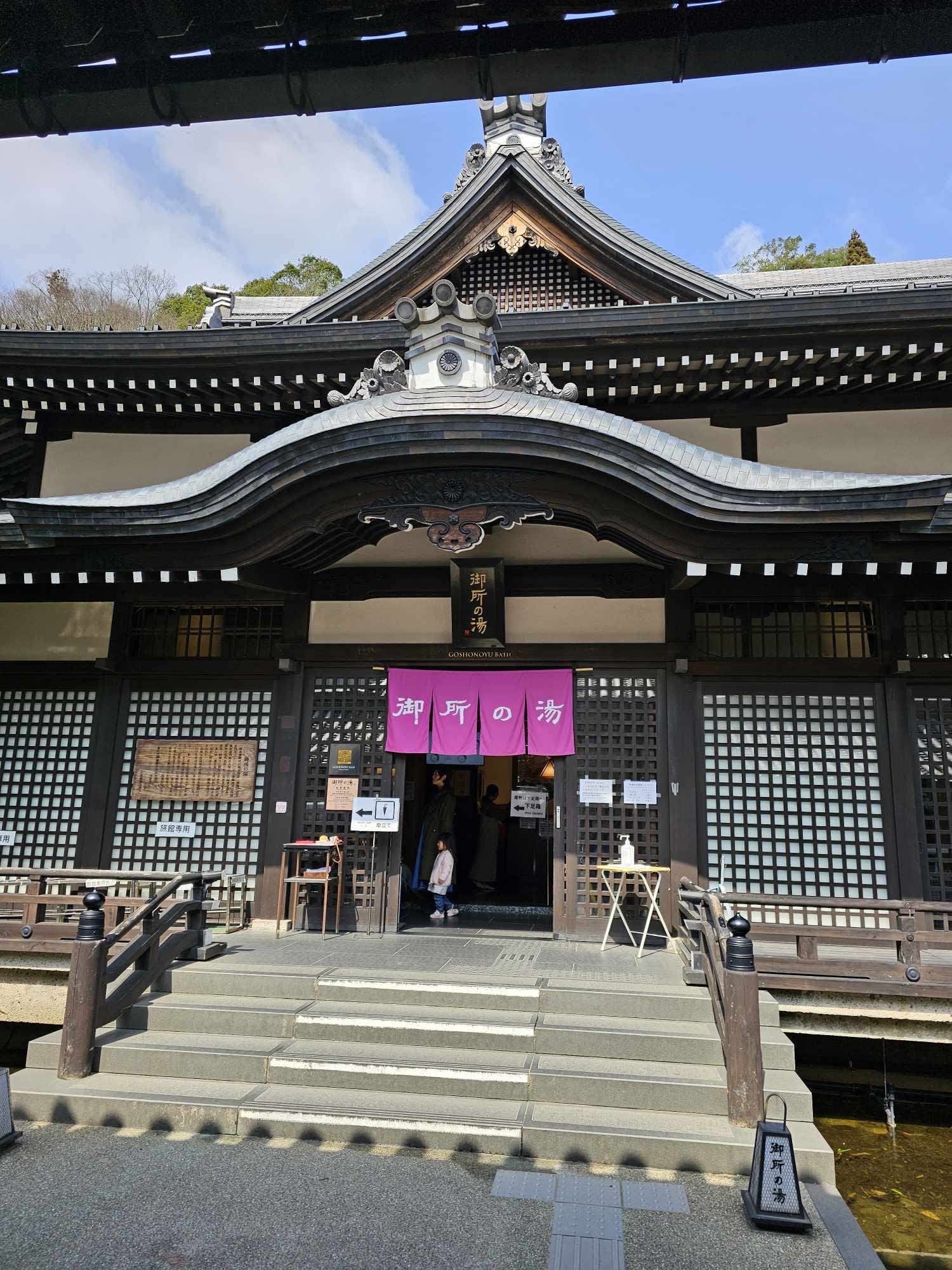
One of Japan’s most famous places to stay when travelling is at an onsen. The hot water and relaxing scenery make for a perfect way to pass the time, especially in winter when you can watch the snow fall outside while staying warm in the soothing water. Saunas as well are a happy addition to many onsen, giving people a full range of relaxation opportunities.
We recently spoke with Eetu-Antti Hartikainen, a PhD student at Hokkaido University in Sapporo, about saunas and sauna culture, so let’s get into it and learn about ‘sa-katsu’!
Hello! Thank you for joining us. To start us off, could you please give us a short introduction of yourself?
Hello, my name is Eetu-Antti Hartikainen, and I'm currently studying at Hokkaido University as a research student. I'm scheduled to begin my journey as a PhD student this April, studying saunas and sauna going culture in Japan. Alongside my studies, I work as an export manager for a Finnish sauna export company.

What is it like living in Sapporo and Hokkaido? Do you have any favourite foods or places to go?
I really like living in Sapporo. Somehow I feel like the atmosphere of the city is really nice, perhaps because the city, in regards to its size and the feeling, is a bit similar to Helsinki in Finland, where I've lived most of my life. I don't know if it's something like the mentality of people in the northern regions, but I feel like I connect relatively easily with the people here, it's a really nice city and I really love living here.

Regarding places, I mostly stick to the northern parts of the city, usually because they are the more quieter areas compared to the central areas. Especially when I moved here in September, it was super nice to just go around with my bicycle and explore the different parts of the city. It's unfortunate that's not possible at the moment because it's so snowy and slippery outside so it would be a bit dangerous, but maybe in April, when the snow is supposed to melt a bit I can maybe resume those activities. Alongside that, if I want to go somewhere in Sapporo to enjoy time with friends or hangout, I go to Susukino, which is the entertainment district with many restaurants, karaoke, and other places. Also Maruyama, which is a stylish neighbourhood with nature nearby and Mt. Moiwa. I really like the atmosphere there and the tramline that goes around the district. Regarding food, I really love soup curry. I'm glad to be living here, it's my absolute favourite Japanese food and I'm planning to try out all the different soup curry places in Sapporo if I can over the three years that I'll be doing my PhD.

For those who are unfamiliar, how did your interest in sauna culture come to be and what does your research focus on?
Originally, in 2019, after I had come back from my student exchange in Tokyo, I started working at this Finnish sauna export company. I was originally planning on doing my thesis project on something else entirely but then I got really interested in saunas. I saw that the way people go to saunas in Japan is a little bit different than in Finland, and people have different ways of thinking about saunas, even the vocabulary that they use is very different, so I wanted to delve deeper into that. I did my masters thesis looking at the social distinctions that are going on in the sauna going culture. For example, how do sauna enthusiasts make differentiations to each other but also to non-enthusiasts, and what kind of meanings they make regarding saunas.

For my PhD topic, because I only looked at the side of the sauna enthusiast earlier, and because my current PhD focus is tourism studies, I wanted to connect saunas to the ongoing phenomenon of sauna tourism in Japan. I made the topic a bit broader, looking at sauna businesses in Japan, and considering how they could be truly sustainable. Even after the current sauna boom ends, I want people to enjoy those kinds of places and see how they can be better integrated into local communities, becoming something more longlasting in Japanese society.
What has been one of your favourite parts of researching sauna culture?
I think that when going to different saunas around Japan you see a different side of the place, you get a deeper touch of the local environment because you can mingle with the local people. Because you are both sauna going, thinking about that aspect, one of my favourite things is actually meeting new people, I've made a lot of new connections just on this kind of shared interest. I have been able to connect with people that I would never had had the chance to talk to otherwise, and that's been really enjoyable. Having this foreigner identity in Japan, I'm kind of an outsider but feel more connected to people by going to sauna with Japanese people, and going to a Japanese sauna.

What makes a sauna a sauna? Is there a difference between saunas and onsens?
I think that's a really difficult question. As a Finnish person, I would likely describe a sauna as a place where there's this kind of heater with rocks, and the really central part of saunas is that you cast water on these rocks yourself, creating a wet environment that is relatively mild in temperature. The temperature is enjoyable and you can socialise inside the sauna and spend relatively more time there.

In Japan, there's many different types of saunas in that there are Finnish type saunas, but then still a lot of them are so-called 'dry saunas', so you don't have the possibility to cast water and generate steam, which is called 'löyly' in Finnish. It's not possible for people to cast water on the stove and it's just heated up with a heater. The air inside the sauna gets really dry and hot, and it's not really possible to stay inside that long. Also they have this, for example, mist saunas or steam saunas, where you direct steam inside the sauna room rather than generating steam inside the room, so they are conceptually really different.
I think the definition of saunas is definitely broader, and then comparing sauna and onsen, in saunas, regardless of the type of sauna, the general idea is that you envelop yourself in steam and then bathe in the steam, but in an onsen, you basically dip into hot water and usually stay there neck deep and submerse yourself in the water. I think the feeling is a bit different in both of them, but I think it's interesting that these two things have started to intermix in that some onsen facilities have built a sauna in their spaces. It's actually really common for these bathing facilities to have saunas included, so you get both experiences when you go to an onsen. Regardless if the sauna or the onsen is your primary objective, you can enjoy both at the same time, which I think is wonderful.
What are the usual temperatures for sauna facilities and how long can you stay in them?
In Finland, 80 degrees celsius is normal, or maybe 70 degrees. However, dry saunas that I mentioned before, most of them are 90 degrees celsius or maybe 100, I've been to places where it has been 110 or even 120 degrees, so they might get really hot depending on the place. You can't stay for very long in hot ones, I've managed a few minutes, but for me, my sauna going stamina is not very high, I can't stand really hot environments for extended periods of time.

Where did the word ‘sakatsu’ come from, and what does it mean?
I've used this word a lot in my masters thesis. Sakatsu is an abbreviated form of 'sauna katsudo', a Japanese word which means 'sauna going activities', so it refers to the act of going into a sauna. It can encompass all the different things you can do alongside sauna going, such as enjoying a meal afterwards. There's also a separate word for this, called 'sameshi', which is an abbreviation of 'sauna meshi'. You can also enjoy saunas with 'safure', or 'sauna friends', that you got to know while you were going to saunas. You might only meet these friends when you go to saunas and not otherwise in your personal life. I think there are different specialised words or sauna lingo that has been developed that are really interesting. The core of 'sakatsu' is going into the sauna, and doing the cycle of sauna and then the cold pool, or 'mizuburo', and then 'gaikiyoku', or 'open-air bathing', and you cycle through these three things.
Is there a difference in sauna culture between Japan and countries such as Finland?
I think there definitely is a difference, and I think Japan is a combination of very different sauna cultures. I think they have imported a lot of different elements from different sauna cultures, for example, if you consider Finland, a lot of the outdoor saunas resemble this Finnish summer cottage sauna or wooden cabin that you might find in a more remote or rural area. Japan has incorporated this idea of self-löyly, the act of casting water on the stove, they've incorporated a Finnish style of sauna going in these kinds of places. Some have even offered the possibility to dip into a lake nearby, especially if the natural environment allows for it.

One country that has also given a lot of inspiration to Japan, even more than Finland, is Germany. They have their own sauna ritual called 'aufguss' where you infuse aroma oils into a towel and then swing it around in the sauna room, sending these aromatic heatwaves to people enjoying the sauna. Japan has made their own version of this called 'neppa' which has even more performative elements and is more entertainment oriented. For example, I have seen a person who was doing anime cosplay and then swinging the towel around at the same time and interacting with the customers. I think that is really interesting, and shows how they use these different elements, not copying exactly from other sauna cultures, but it's something that is reinterpreted in Japan and then made into a really distinct Japanese form.
Where do you see Japanese sauna culture evolving in the future?
This is a really interesting and timely question. I think it's evolving all the time and there's new directions, it's hard to predict 100% but for example, during Covid, there was a surge in outdoor and private rental saunas because people wanted to be able to do social distancing while also enjoying saunas. People wanted to rent those kind of places, you could do it alone or with a small group of friends or relatives, renting out this small space, but I'm not sure now, this outdoor boom is kind of fading away a bit, so we would need to see the situation with outdoor or private rental saunas a few years from now.

I think that one thing that is happening right now is that a lot of effort is being put into marketing these household saunas to the Japanese market. Basically there are companies that want to enable Japanese people to do sauna going from the comfort of their own homes, but I think one of the big challenges here is that a lot of Japanese people, if they like saunas, still prefer baths, or 'ofuro' inside their own home. Generally, Japanese apartments are very small, so if you already have the bathtub there, it would be really difficult to integrate a sauna or you would need a very creative solution to be able to integrate it. One choice is, if you have your own house or a bigger house, you could put it outside if possible. Even though there are some trends out there, there are still big challenges that need to be overcome if we want to see saunas inside Japanese homes.
What is the wellness economy?
So 'wellness economy' is a word that references a variety of different industries, or a specific sector in the economy that integrate a kind of wellness activity and lifestyle into the daily lives of consumers. It's different than just the regular economy, so while the global economic situation may be changing at the moment, I think that in some years, the wellness economy, these specific industries that aim to promote wellness, might have still improved. I think that speaks to increased awareness in people wanting to have more wellness services in their own homes or wanting to be able to enjoy these public services somewhere outside their home.
Why does Japan rank so high in the wellness economy? (3rd biggest in 2023)
Japan already has this kind of traditional infrastructure, they have a lot of onsen hot springs that attract a lot of people, and also zen philosophy and a kind of wellness thinking, such as a healthy diet. These mindsets attract a lot of people. There are also new innovations, not relying entirely on traditional things. I mentioned an example of onsen facilities integrating sauna facilities as a part of them, I think they are constantly looking for different solutions on how to keep customers entertained and how to provide additional value for people who visit these places. I think it has to do with both of these things, having a solid base for wellness but also coming up with new things all the time.
You recently went on a trip across the country visiting various onsens and saunas, can you describe it? Any suggestions for places to go?
It was a very nice experience to be able to travel around Japan because I don't think I'll ever have the chance again to do three months of fieldwork uninterrupted and just be able to focus on studying saunas in Japan. I actually made a list because I had so many places that I wanted to mention and I didn't want to forget any of them, and it's still only a small section of all the places I could mention, but just kind of thinking about what kind of places stuck out to me. I think that I'm kind of biased towards Hokkaido since I'm currently living here, I think that the sauna culture resembles Finland in a lot of ways. They have a lot of similar saunas here, with the environment and weather being really similar. They also have a lot of connections to Finland.
I would mention 'Maple Lodge', 'Kitakobushi Shiretoko Hotel & Resort', and 'Hakugin-sou'. All three of these places have some form of 'rotenburo', or open-air onsen, so you can enjoy saunas with onsen at the same time. In Kushiro there is a place called 'The GEEK', which was a really nice Finnish style sauna with hinoki benches, a sort of Japanese touch. I especially like the Tokachi Subprefecture in Hokkaido, there's 'Hokkaido Hotel', which has excellent facilities, and if you are ever in Hokkaido in winter, I would recommend trying out Avanto37, a cold plunge and sauna experience near Kuttari Onsen Lake Inn. After the sauna you can go to the frozen lake and dip in a hole that's made in the ice, and that is a unique experience in the Japanese context.

Besides Hokkaido, I really like Kyushu and Tohoku regions. In Kyushu I could recommend 'Rakan no Yu', which is located in Saga Prefecture, and also 'Yurakkusu' in Kumamoto Prefecture. I really like 'Koamigame', which is located in Ibaraki Prefecture, it's a bit different in that after the sauna, you can take a dip in the nearby river. I think it was a really nice experience to have, and I've probably never done it in Finland as usually it's just lakes. In Miyagi Prefecture, there is a place called 'Tsunakan', which is a really traditional guesthouse, but they have this so-called 'sauna toaster', which is a trailer type sauna resembling a toaster in their yard that you can use for an additional fee.

In the Tokyo area, I think of 'Sky Spa Yokohama' and 'Yunoizumi Souka Kenkou Centre', but in Tokyo a lot of the places are really crowded so one place that I really liked for a less crowded experience was 'Rosco', which is located next to Komagome Station. In Kansai, in the Osaka or Kyoto area, there is 'Nobeha no Yu Tsuruhashi' in Osaka as well.
How many saunas/onsens in Japan do you think you have gone to in total?
During the fieldwork trip only, I visited 70 different facilities, and now after moving here I have been to several ones as well. I try to go to different places weekly, and of course some places when I was in Tokyo during my student exchange, and even before that on my travels. So I think I've gone to around 100 facilities and counting, I'm trying to experience more and more as I go and I hope to be able to visit all the places in Sapporo. It might be difficult to do all the sauna places in Hokkaido, but I'll try to visit at least most of them. Since I've started documenting my travels I've been to at least 90 facilities so I think that it's 100 or more now. So this is only the beginning!

Thank you for talking with us!
(Two other recommendations from Eetu are):
The Sauna (Nagano Prefecture, next to Lake Nojiri)
- If you’re looking for a very Finnish sauna experience, you cannot miss this! The most Finnish sauna that I have been to, feels like you are in a Finnish sauna village with the beautiful log cabins and the feel of the steam (löyly).
And
Kusatsu Onsen (Gunma Prefecture)
- This onsen resort has a myriad of comfortable onsen facilities, and is easily accessible from Tokyo. They have some community bathhouses resembling wooden huts that allow you to dip in onsen water for free. They are very small and accommodate only a few people at once, and the water is very hot, so it is good to keep that in mind!
Follow Eetu at @saunanokuninoedo on both Instagram, Twitter, and TikTok!
To stay up to date with all the latest happenings in Japan follow us on Facebook or Instagram!

















































